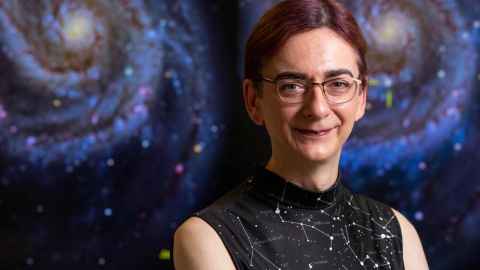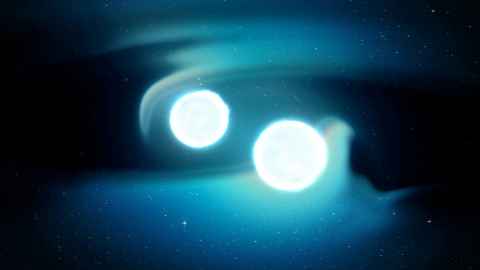Cosmic factory's origins revealed by University's astrophysicists
13 January 2023
University astrophysicists have shed new light on "factories" in outer space producing elements used in the creation of planets, galaxies, and life.

Researchers led by Dr Heloise Stevance, of the Department of Physics at Waipapa Taumatau Rau, University of Auckland, sketched the back story of a neutron-star merger.
Neutron stars, the collapsed cores of massive stars which have exploded, are among the densest objects in the universe. When two neutron stars merge, an explosion called a kilonova forges elements such as gold, platinum, and uranium (the cosmic factory at work.)
A neutron-star merger was observed for the first time in 2017 after advances in technology allowed the detection of gravitational waves, ripples in the fabric of timespace which are released as the stars spiral into each other.
It’s this 2017 event, which took place about 130 million light years away, that Stevance and her colleagues investigated.

Information encoded in the gravitational waves and the light emitted by stars in the home galaxy of the kilonova was used to calculate the stars’ likely life history.
Researchers used state-of-the-art simulations developed over the past 15 years by the Binary Population and Spectral Synthesis code (BPASS) team, led by Professor Jan Eldridge at the University of Auckland and Associate Professor Elizabeth Stanway at the University of Warwick in the United Kingdom.
Born about 10 billion years ago during “Cosmic Noon,” the most active period of star formation for our Universe, each star was more than 10 times the mass of the sun, with the bigger star as much as 24 times larger, according to the research published in Nature Astronomy.

The stars were “binary,” orbiting around each other.
“The most interesting part of their life story is how these stars interact with each other as they age,” says Stevance. “Sometimes a star can grow so much that it will engulf its companion. This is called the common envelope phase.”
In the common envelope phase, one of the binary stars grows to become a large red giant. The stars don't merge but lose much of their mass, ending up so close that each orbits the other in just a matter of days.
The stars being studied went through this phase at least twice, according to the research.
“This process resulted in a lot of star dust being ejected from the system into space even before the explosion,” says Stevance. “And it brought the stars closer together, allowing them to spiral into each other at just the right time for humans to catch the gravitational waves in 2017.”

The 2017 event was captured first by gravitational wave detectors and then by traditional telescopes which detected the light of the explosion and the galaxy where it happened.
Gravitational wave detectors will continue to reveal stellar explosions from all corners of the cosmos, and the methods developed in Stevance’s study will help astronomers to piece together the genealogy of events to be discovered this year and beyond.
Carried out with the assistance of a Marsden Fund grant, the research also involved scientists from the University of Durham in the UK and Radboud University in the Netherlands.

Media contact
Paul Panckhurst | media adviser
M: 022 032 8475
E: paul.panckhurst@auckland.ac.nz